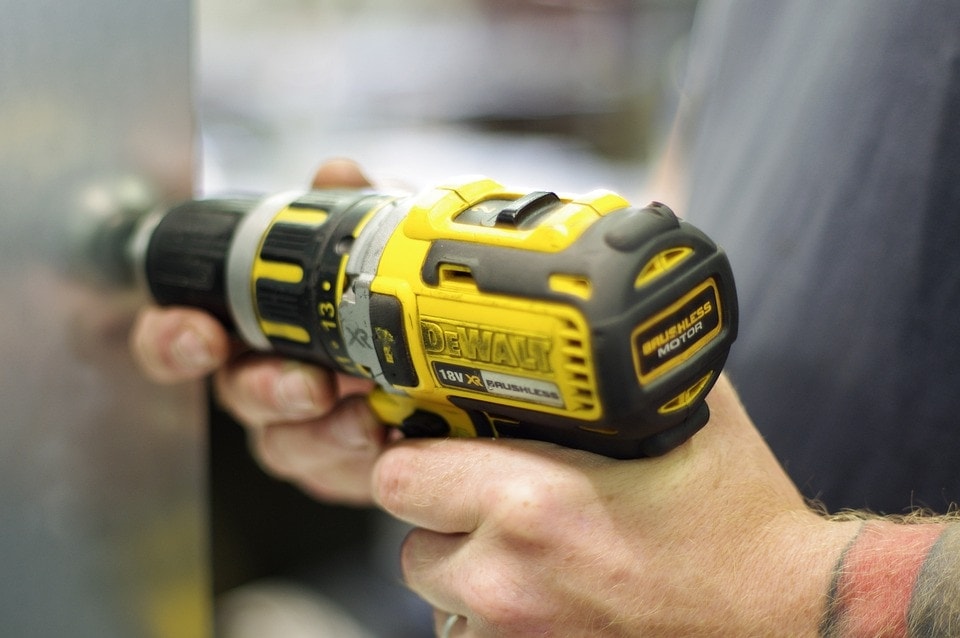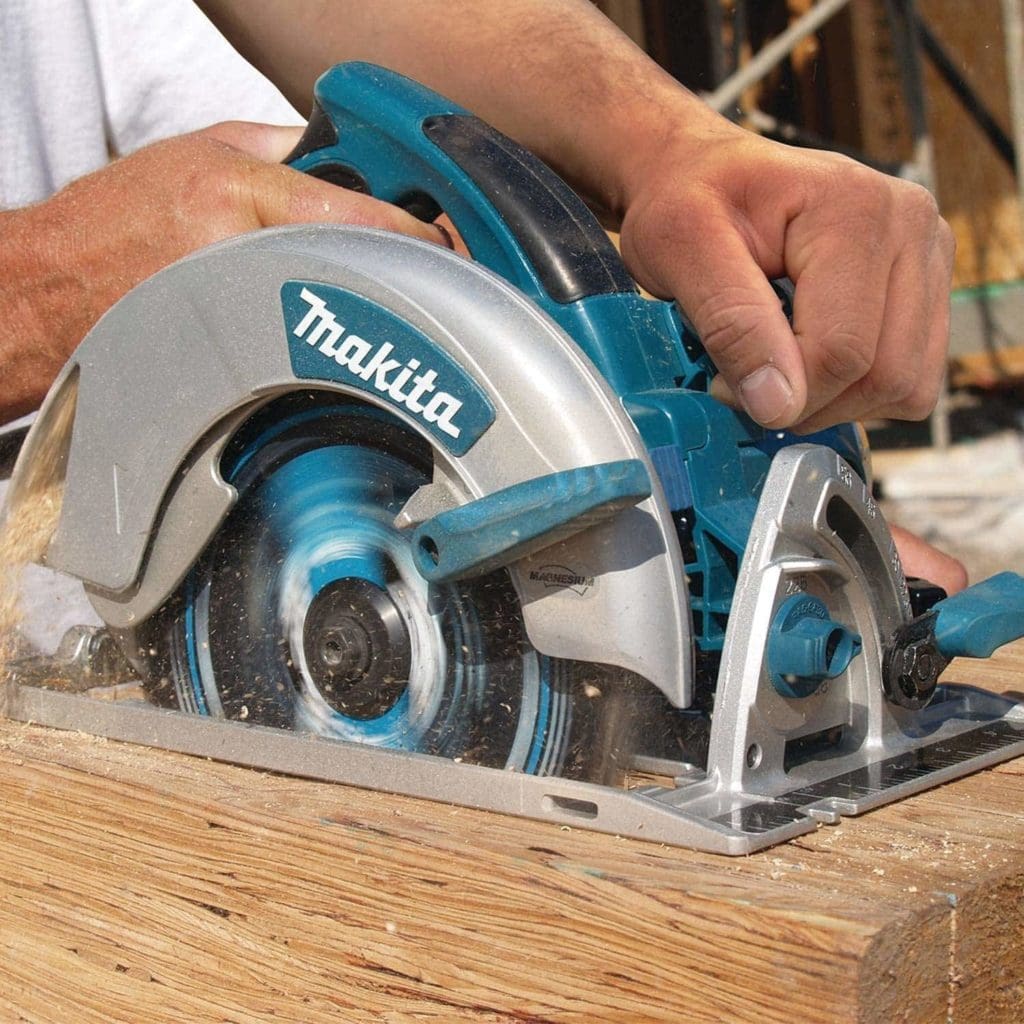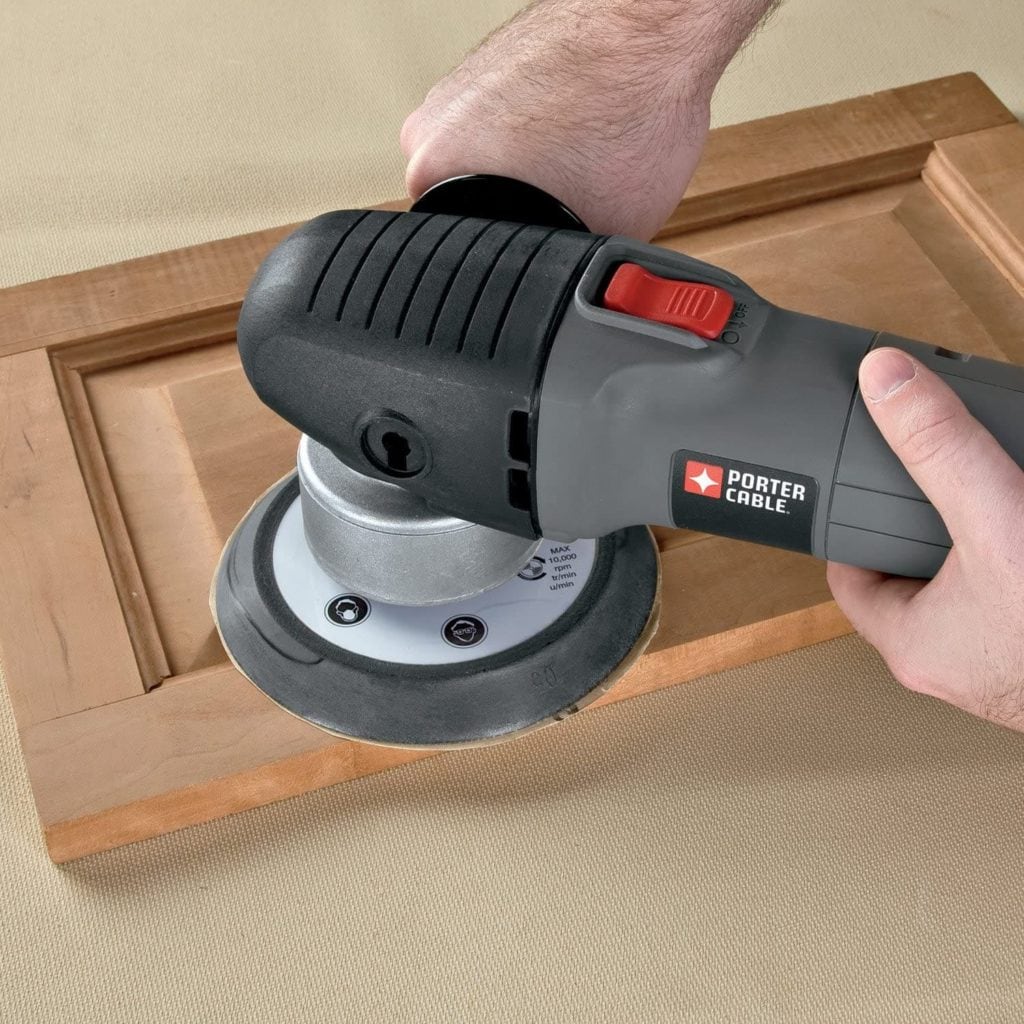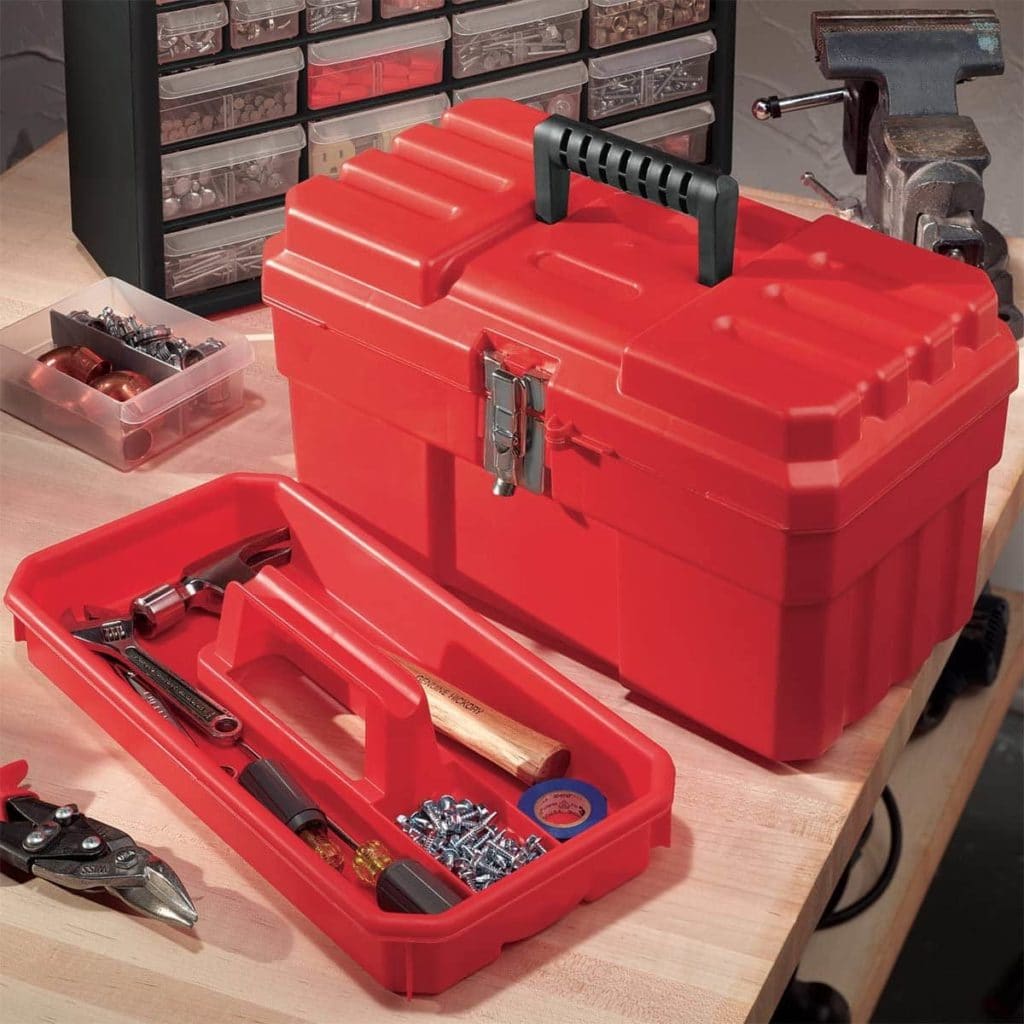40 Must-Have Tools for the Aspiring Handyman
-

- Last updated:


How much of your income goes towards new tools? As handymen, we admit—we might have a problem But it seems like there’s always just one more tool that we absolutely must add to our collection. Still, there was a time when we got by with the bare essentials and everything still worked out just as it needed to.
We decided to put ourselves back into our old shoes and figure out which tools the “bare essentials” really includes. After much thought, the following 40 tools are the ones that we wouldn’t want to be without if we had to start all over again.

Hand Tools
1. Tape Measure

All handymen know the old saying: measure twice, cut once. Of course, few of them decide to follow that rule. Still, you’re not going to be measuring anything without a tape measure, even if you only plan to do it once.
2. Utility Knife
This tool has a never-ending list of uses. From opening a tube of caulking to cutting a piece of drywall, you’ll use your utility knife on every job. Luckily, they’re cheap and easy to carry. Just make sure you have plenty of blades because you’ll be going through them quickly.
3. Putty Knife
A hard putty knife is similar to a utility knife in that it has nearly infinite uses. You can use it as a chisel to help lift a tile or use to scrape off a piece of grout that’s too high. It’s great for mixing up all sorts of materials and can even be used for minor patch jobs.
4. Drywall Stab Saw
Old-time carpenters might still prefer to score their cutout, mark an X, and hit it with a hammer. But regardless of whether you’re cutting out a hole for an outlet, a light, or anything else, a drywall stab saw will make a neater hole more efficiently.
5. Hammer

If you can think back to the first tool you ever used, it was likely a hammer. These are great for all types of hitting. You can use them to break tiles for removal, install nails, remove nails, operate chisels and putty knives, and plenty more uses beyond that.
6. Level
You might be able to perform a job without a level, but that doesn’t mean you should. Without this vital tool, everything you build could turn out as crooked as the leaning tower of Pisa.
7. Screwdrivers

Phillips, flathead, Torx—screwdrivers of all types are going to be invaluable to a handyman. You’ll need them for everything from removing receptacle covers to performing repairs on your tools.
8. Pliers

Get a grip! Sometimes, your fingers aren’t going to be strong enough. Luckily, a good pair of pliers will be waiting in your tool bag for just such an occasion. These can help you tighten a fitting or hold onto something too small or too hot for fingers.
9. Snips

If you ever work with metal of any type, you’ll need a pair of snips. On the east coast, you’ll use snips for working with aluminum capping, vinyl siding, and more. On the west coast, these are the go-to tools for cutting lathing for stucco.
10. Chisels

These come in handy whenever you need to break something up. Need to remove a chunk of concrete? Unless you want to rent a jackhammer, you’ll probably be using a hammer and chisel. Better practice your aim though; you don’t want to miss when swinging for the chisel.
11. Drywall Hawk
If you’re a handyman, you need to be prepared for repairs of all types. One of the most common types of repairs you’ll likely perform is on drywall. Drywall is easily damaged, but it’s also easily fixed if you know the process. An essential part of that process is a drywall hawk, so make sure you keep one on hand.
12. Drywall Knife

Hand in hand with the drywall hawk goes a drywall knife. These are long, flexible putty knives that allow you to apply joint compound to the drywall. They come in various lengths, and you’ll want to get at least a six-inch and a 12-inch knife to get you started.
13. Hand Sander
Once you’ve applied the joint compound to your drywall, you’ll need to be able to smooth it down. A hand sander is the way you’ll do that unless you get a much pricier electric drywall sander. Your hand sander can be used for more than just drywall, though.
14. Tile Trowel

Across the country, many homes are floored with tile, so you need the skills and tools to replace and repair tile. To install tile, you’ll need a notched tile trowel. Different-sized tiles need different-sized notches, so you’ll need at least a medium-notch and a large-notch trowel to deal with the most popular tile sizes. Luckily, these are inexpensive tools that you’ll get a ton of value from.
15. Grout Float
When installing tile, the tile is only part of the picture. It’s not finished until the tiles are grouted, which requires a special tool called a grout float. These can be made of foam or rubber, depending on your preference.
Power Tools
16. Cordless Drill

As a handyman, you’ll find yourself needing to drill many holes in many different materials. If you need to install a gate, you’ll need a drill to make holes to anchor the gate in the wall. You’ll even need it for simple tasks, like installing a TV wall mount or adding a sprayer to an existing sink.
17. Impact Driver
Before impact drivers, screws were usually installed with a drill. But once you’ve used an impact driver, you’ll never want to use a drill for installing or removing screws again. Impact drivers save your wrist by creating hundreds of tiny impacts per second instead of transferring the torque to your wrist like a drill. And this makes it much easier to put in those extra-long screws and bolts.
18. Circular Saw
These saws can make cuts in any type of lumber. If you need to cut a 4×8-foot sheet of plywood lengthwise, a circular saw is usually the easiest way to accomplish it. And they’re small enough that you can easily take them to any job site with you.
19. Sawzall (aka Reciprocating Saw)
Sawzalls can saw through just about anything. Every time you have one of those “what the heck is this!?” moments, your trusty Sawzall will be there to help bail you out. Just don’t cut the wrong pipe!
20. Shop-Vac
Handymen have a well-deserved reputation for being messy workers who don’t clean up after themselves. But you have a chance to set yourself apart from the pack while setting yourself up for success by simply bringing along a shop vac to every job and making sure you leave the job site spotless.
21. Mixer

Handymen have to be able to do it all, which means you’ll be mixing up a variety of different materials. Grout, joint compound, thin-set, mortar, cement, and many more substances will require a strong mixer. Attempt to mix them with your drill and you’re likely to burn its motor up pretty quickly.
22. Hammer Drill
Hammer drills are there for when you need some serious power behind your bit. They’re the perfect tool for making holes in cement, brick, stone, and other hard materials.
23. Tile Saw
If you’re going to be installing or repairing tile, you’ll need to be able to precisely cut the tile so it will fit. Luckily, tile saws come in all shapes and sizes, so you won’t have to break the bank or have a giant box truck to bring one along.
24. Miter Saw
They’re big and bulky, but there are some jobs you wouldn’t want to take on without a miter saw. If you need to build walls or do any type of framing, a miter saw is a must-have. Similarly, it’s the best way to do trim work. Trying to cut that by hand with a miter box is a great way to waste your time and ensure your profits dwindle away.
25. Finish Nailer
Installing trim and making repairs in cabinets and other wooden items will require a finish nailer. You could try hammering finish nails in by hand, but you’re very likely to damage the item you’re working on. Thankfully, the days are long gone when a finish nailer required a long hose and an air compressor. Take a look at some of the newer battery-powered finish nailers for the ultimate in portability.
26. Framing Nailer
Often, trying to install a long screw or nail in a piece of wood results in splits. It’s also pretty time-consuming, and you’re likely to slip off with a screw gun or miss with a hammer. But a framing nailer will drive a nail quickly and without splitting the wood. Like finish nailers, these have come a long way, so you can find some great battery-powered ones today.
27. Angle Grinder

These are some of the most versatile tools you’ll ever find. Just change the wheel and you can change its capabilities. These are great for cutting metal, such as bolts sticking out, rebar, or pipes that need to be removed. But that’s just the start of their usefulness. You can use them to make intricate cuts in tile, remove cement, and anything else you can imagine.
28. Table Saw
When you need clean, finished-edge cuts, you’ll need a table saw to make them. If you start building cabinets, bookcases, shelving units, or any type of similar fixture, a table saw will become invaluable.
29. Sander
When working with wood, an electric sander is a necessary tool. They can smooth down coats of paint or stain, remove old paint or stain, and smooth down rough wood surfaces so they’re nice to the touch.
Electrical Tools
30. Electrical Tester

Even if you’re only going to dabble in electrical work, an electrical tester is a must-have. You can use it to make sure a circuit is dead before replacing a light or to attempt to locate a wiring problem if you have a bit more electrical knowledge.
31. Wire Strippers
These are another tool you’ll need for even the most basic electrical work. Anytime you need to replace a light fixture, an electrical outlet, or even just a light switch, you’ll likely need a set of wire strippers.
32. Fish Tape
If you need to relocate a light or any type of electrical fixture, you’ll need a fish tape to help you run new wire from the fixture to a hot circuit where you can splice in.
Accessories
33. Toolbox or Bag
When you have so many tools, finding what you need can be difficult. Even worse, carrying all of these tools into and out of different homes can be tiring and time-consuming. But a great set of toolboxes or bags can save you time and energy. Just make sure you always put a tool back where it belongs when you’re done with it, so your bags stay organized.
34. Hole Saw Bits
These are the tools you need for making large holes in just about any type of material. Big hole saws are great for cutting out holes for recessed lighting. Smaller hole saws can make holes for sink faucets or bathroom shower fixtures. Invest in a nice kit that covers the whole range from 1.5 to six inches.
35. Drill Bit Kit
Anytime you need to install a new bolt or screw to hold something up, you’ll probably need to pre-drill it first, which requires a drill bit. Get them in a kit so you have all the sizes you might need.
36. Stud Finder

Mounting anything heavy to a wall requires either installing wall anchors or drilling into the stud. If you’re lucky, the stud will be where you can use it. Either way, you’ll need a stud finder to find out!
37. Gloves

As a handyman, you’re going to be working with all types of materials in many different situations. Gloves can protect you from the nasty mess in someone’s shower drain, splinters from OSB, and even prevent you from getting shocked when working with electric. Don’t skimp on your gloves; you’ll be using them often.
38. Headlamp

Headlamps are far superior to flashlights for handymen. If you ever find yourself in an attic with no lights or underneath a manufactured home looking at their plumbing, you’ll be thankful for the hands-free illumination that a headlamp provides.
39. Safety Glasses or Goggles

Cutting, drilling, sanding, and almost everything else you do as a handyman creates dust and splinters that can easily get in your eye. Think about how fast a circular saw blade rotates, throwing sawdust out in every direction. You don’t want to get these splinters in your eyes scratching up your corneas. So, invest in a nice pair of goggles or safety glasses that’s comfortable so you won’t mind wearing them.
40. Marking Utensils
You can measure and cut all day long but if you aren’t marking your measurements, then you’re not going to get anywhere. Pencils and markers are the marking utensils of choice. They work on a large variety of materials and will make sure you can always see where you’re supposed to be cutting.
Final Thoughts
No matter what tools you’re equipped with, if you don’t have the skills, they’re not going to do you much good. But if you’ve got the skills, these 40 tools will allow you to complete most jobs on the handyman’s roster ,so you can keep growing your clientele list—which helps you afford to keep growing your tool collection.
You might also like:
- How Much Do Handymen Actually Make?
- How Much Does It Cost to Repair a Deck?
- How to Start a Handyman Business (11 Simple Steps)
Featured Image Credit: Freepik
Contents




























